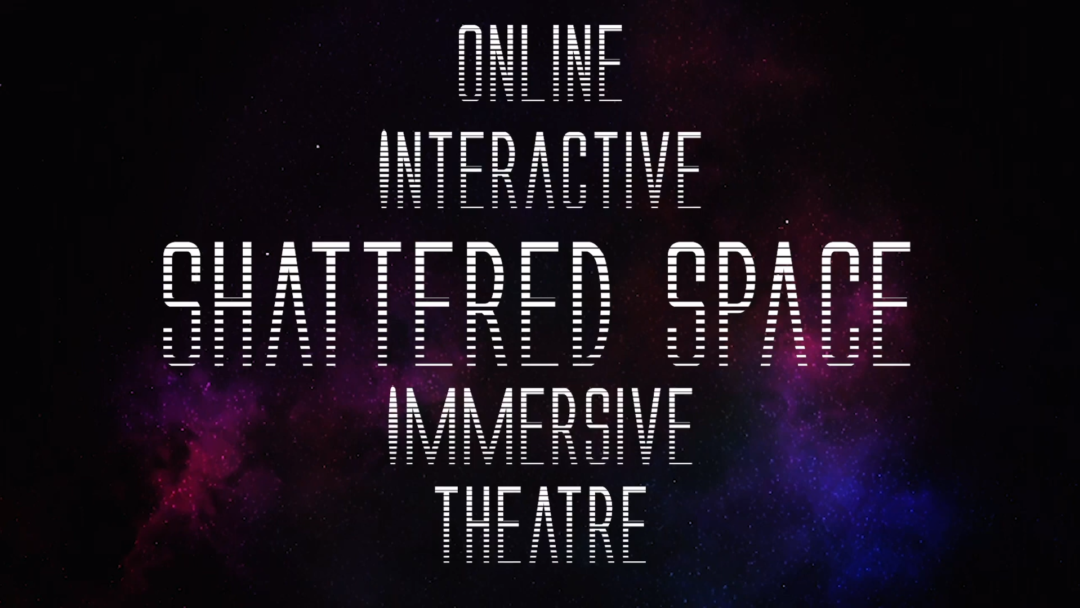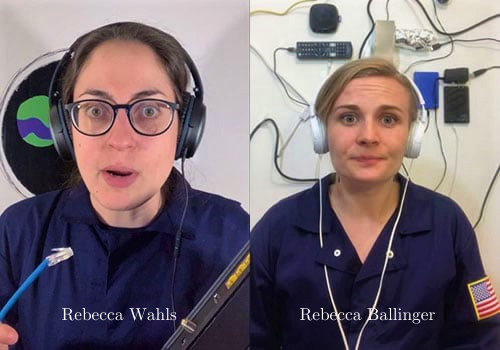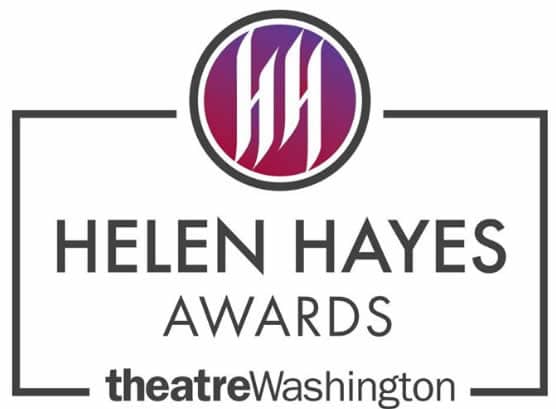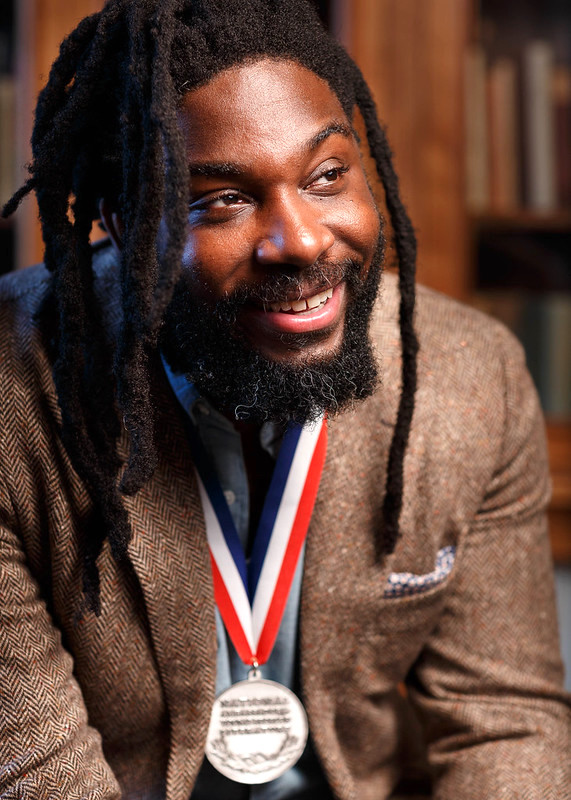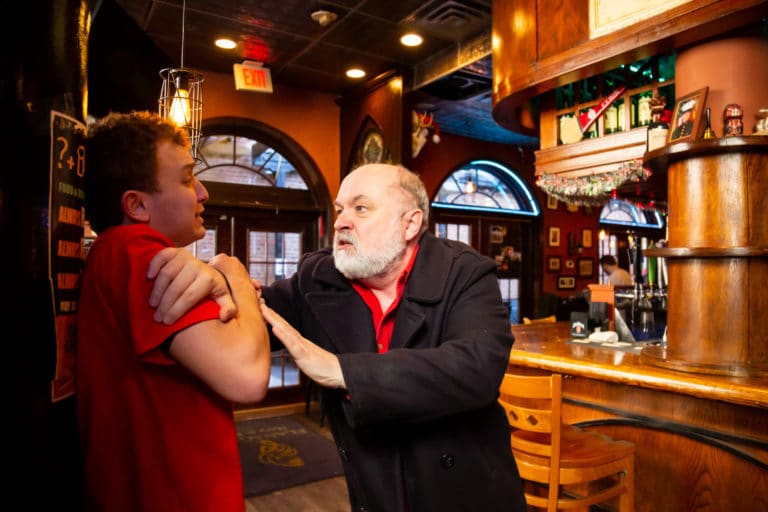By Julian Oquendo
This article was first published June 16, 2020 in DC Theatre Scene here.
A new company is launching audiences into space with an exciting confluence of new technology and theatre. In Shattered Space by The Scattered Players, audiences take on the role of Star Jockeys aboard a spaceship which travels through a solar system visiting different planets on the verge of a major cataclysmic event.
The concept of Shattered Space, and the sophisticated programming underlying it, is a promising harbinger of what’s to come as people like Shattered Space Lead Engineer Chris Uehlinger continue to create new digital theatrical experiences.
Shattered Space is very impressive work. How did you achieve it?
Chris Uehlinger: … the 2 big web technologies that underlie this project (the WebRTC streaming stuff and the WebGL 3D stuff) are “both shallow and deep”. To truly understand WebRTC you’d need to do a deep dive on the history of streaming protocols, VoIP and telecommunications, but you can also follow a simple tutorial and learn how to use the user’s webcam and microphone in a web app pretty easily. You can (and many people do) spend years learning how to build beautiful worlds with 3D, but you can also get surprisingly far by just following the tutorials on the ThreeJS website and then looking through their open source examples for things you’d like to use in a project. These topics both look unapproachable from a distance, but once you’ve got a single foot in the door they can feel very empowering in terms of the kinds of things they let you create.
How long has your team been working on this?
In early March (as all my spring shows were getting cancelled) I approached Lance (Bankerd), Matt (Payne) and Ben (Abraham) with the idea of doing a fully online immersive show. I was inspired by a recent immersive show I’d seen by Submersive Productions in Baltimore called “See Also”, and it had gotten me thinking about having a show with a non-linear story that the audience can explore in any order.
How long did it take you to program, design the ships, create a working system, etc?
It’s been about 3 months of work, and while a lot of it involved things I’d done before, a lot of it was happening at a new scale. For instance, I’d prototyped a video conferencing app at my day job, but never built one for a production product. This app has to work immediately on whatever device the audience members want to use, which meant we not only had to build a video conferencing app, but we needed an admin dashboard with real-time reporting of errors and audience connection issues.
I’ve got to shout out to our Stage Manager Liz Richardson, Marketing Director Donna Ibale, and Marketing Intern Mark Uehlinger (my brother) who are our crack tech support team. As each show is about to begin, we’re all on a Zoom call monitoring the company email account, the error logs, and other metrics to make sure everyone who bought a ticket is able to get in and isn’t having issues with their microphone and camera. They’ve gotten really good at finding patterns where certain errors can be solved quickly with certain solutions, and to the extent this show successfully runs, it’s down to their diligent efforts behind the scenes.
The 3D models of the ships and stations were mostly purchased from CGTrader (mostly chosen by Lance based on the visions put forward by the devisers), the planet materials were designed using an awesome open source tool by Rye Tyrell that creates procedurally generated planet materials based on a whole bunch of parameters. Certain parts like the “Cosmic Rapids effect”, the Ansible and the blue AI face were built by me whole cloth, and in a perfect world I would’ve liked to work exclusively with custom 3D assets. But given our limited time and resources, building 21 custom models wasn’t in the cards for this show.
What was training like with the actors?
The first rehearsals were on Zoom, since I was still building the app deep into the rehearsal period. The cast was split into 5 rehearsal groups for a lot of the process, and on one particular week we brought the groups into the app during their rehearsal time so they could see what the actor experience would be like. We collected feedback and iterated based on that to make sure the app would work with each person’s setup.
For instance, many of our actors are using mobile phones for their performance, so both the audience and actor apps have to work on mobile, and have almost all of the same features as the desktop versions. We also have a “headless” version of the actor app without the audio/video stuff that some actors use to look at the ship’s chat, inventory, etc. All of this came from having a tight iteration loop where we sought actor feedback and responded to it quickly, sometimes within a day.
I’ve gotta give a lot of credit to the actors here: They were patient, understanding, and quick to adapt to a platform that was changing under their feet every day. This kind of tech can only work if folks on the artistic side trust the folks on the technical side, and us folks on the technical side have to earn that trust by holding ourselves to a high standard of quality and accountability.
How do you see this kind of technology affecting local theatre going forward?
We’re going to be in quarantine for a while, and it’s going to be extremely rough for local theatre. But the good news is that people still want theatre if we can find ways to bring it to them.
I’ve seen a lot of people using Zoom to put on productions of existing plays, and I think that is a totally valid choice. But I also feel like when you take normal linear theatre and move it from the real world to digital, it starts to blur the line between theatre and film. At a certain point, if we want to do film we have to get good at cinematography, editing and the other skills that make good indie film good.
If we want to be different from film, we have to do what film can’t do, and make something that is undeniably live. That’s not easy: Most of the current canon of plays weren’t built for this at all, and the technical tools available are still rough. Shattered Space required a humongous technical effort, and is not something many companies can probably reproduce. I’ve seen folks like the Pandemic Players in Baltimore use Zoom and some other apps (which hide the Zoom UI) to put on shows that play with the videoconference medium in clever and thoughtful ways. I feel like there’s a middle ground that combines the nonlinear storytelling of a show like Shattered Space with a slightly modified off-the-shelf video conferencing app (like the Pandemic Players use) to allow more companies to put on shows like this.
And if they can, they may find (like we have) that they are no longer really “local” theatre. Although most of our cast is Baltimore-based, we have some folks in Boston, New York and Florida in this show, and we’ve had audience members from other continents. We could see a real flattening of the theatre economy, where good local work starts getting international recognition. And if that’s how things play out, that would be really exciting.
What if other producers want to replicate this experience, or build projects like this?
My plan is to open source the code when we’re done. If someone else has the technical know-how to deploy servers and get this thing running, I’d like to give them a good starting point. But the codebase for this show has a ton of duct tape, vestigial parts that no longer do anything, workarounds for the different ways Chrome and Safari handle audio/video stuff and weird tie-ins to the ARKit app that I’m using for the AI motion-capture stuff. And so it won’t be an easy plug-and-play kind of thing.
Now, if anyone in the web tech world wants to help the theatre world, this would be a great opportunity to do so. It’s hard to find folks with the kind of streaming tech expertise needed to build tools like this, but a few folks working together on an open source solution for this would probably help a lot of people out. If anyone has the desire and the time (a lot of time) to help, feel free to contact me via chris dot uehlinger at gmail.
What can we expect from The Scattered Players next?
We’ve got a lot of ideas for similarly nonlinear immersive shows, some of them specifically kid-oriented, some of them exploring different genres or mechanics. Right now our focus is on making Shattered Space successful, but in a month or so we’ll probably be able to talk more about what’s going to happen in the fall. Stay tuned!

